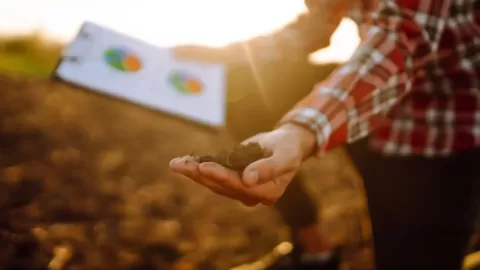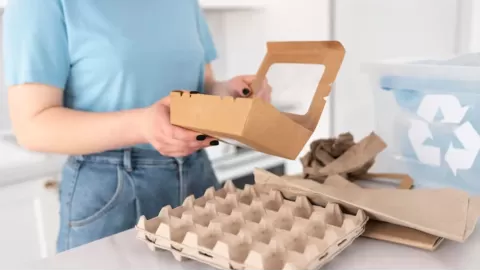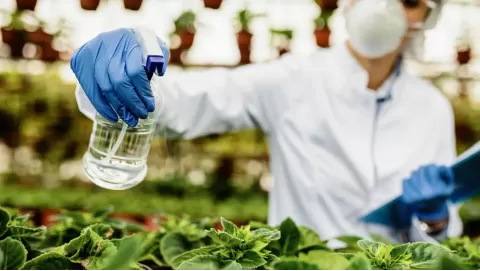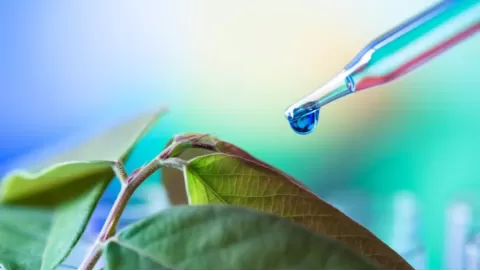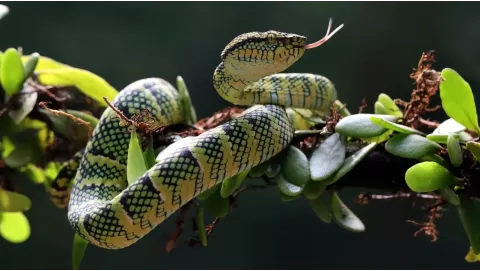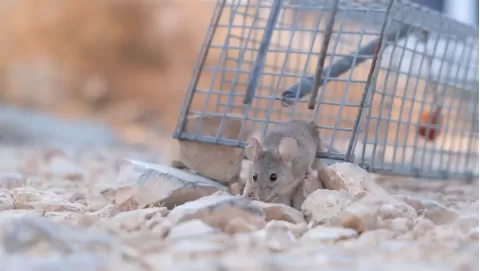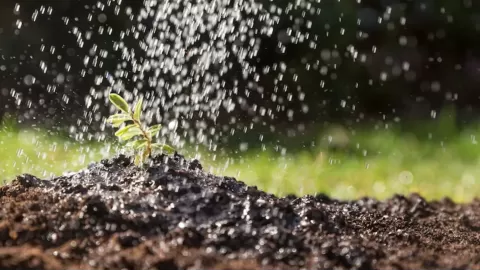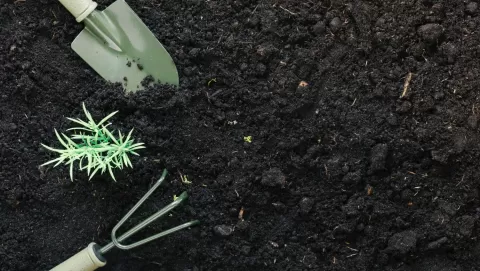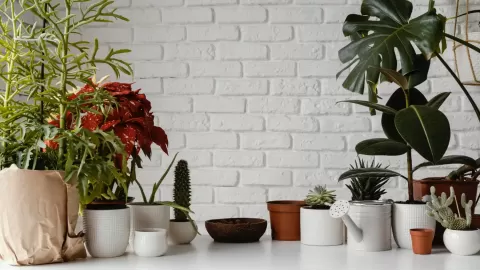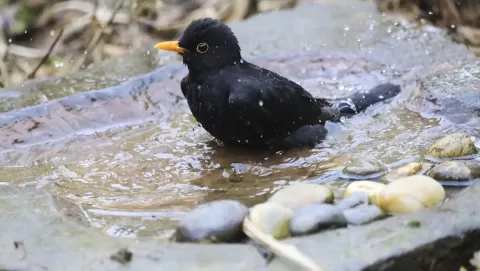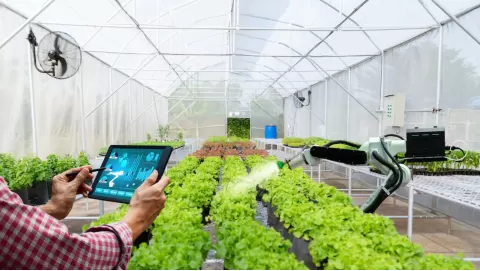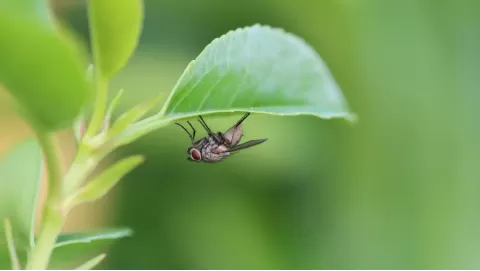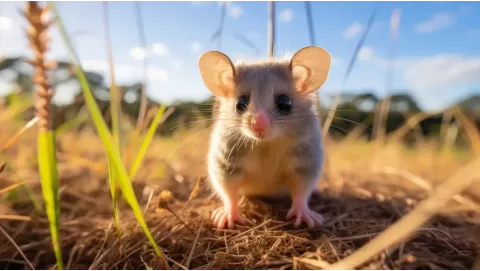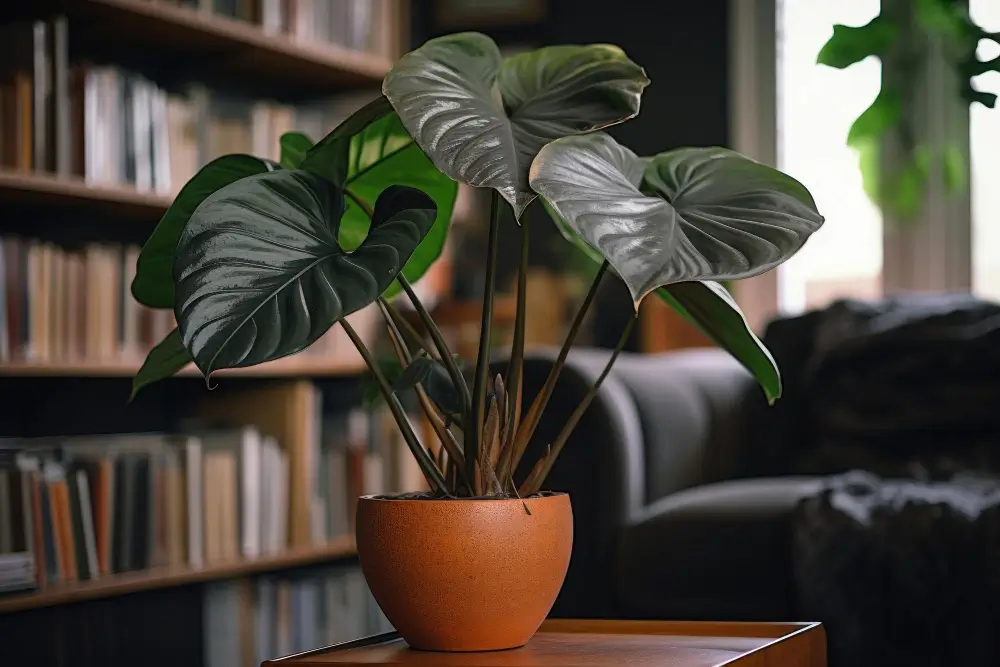
Alocasia Black Velvet care: Tips for growing this unique aroid
Plants create a colorful and lively world filled with many different types that play important roles in nature. The Alocasia Black Velvet stands out among them as a stunning option for any garden. With its striking dark green, soft leaves, and bright white veins, this plant enhances the look of a space and sparks interesting conversations. It requires little care, making it suitable for both new and professional gardeners.
The Alocasia Black Velvet is a tropical plant that enjoys humid conditions, perfect for building a lush indoor environment. It is more than just a pretty plant. This plant is part of a trend that many love to grow special and unique plants at home. With beautiful leaves and impressive growth, this plant has won over many fans and is now popular in modern gardening.
Growcycle provides some excellent options to plant lovers who stand out in the gardening market. Each plant is grown with attention, ensuring it does well in different indoor spaces. Healthy and strong plants are ready to enhance the gardening journey of both newbies and experienced gardeners. They have various plant growing accessories and tools to grow Alocasia Black Velvet indoors and outdoors.
History and Origin
Alocasia Black Velvet, also known as Alocasia reginula, comes from the tropical rainforests of Southeast Asia, especially Borneo. It is part of the Araceae family, which includes many plants with interesting leaves.
This plant was first found in the humid, shaded areas of Borneo's rainforests, where it grows well in low light and moist soil. These conditions help it develop its dark, velvety leaves, which have become popular among plant lovers.
Alocasia Black Velvet started gaining attention in the plant world in the late 1900s. Its almost black leaves with white veins stood out, making it a favorite for indoor plant collectors. Its small size and unique look make it great for growing inside homes.
Botanical Description
Alocasia Black Velvet is known for its beautiful, dark leaves. The leaves are shaped like hearts or arrows and have a nearly black, velvety surface. The dark color is highlighted by bright, silvery-white veins, making the leaves look very striking. The leaves also feel soft and velvety, which is why the plant is called "Black Velvet." The leaves can grow up to 6 inches long and 4 inches wide.
The plant has short, thick stems that grow close to the ground, giving it a compact and bushy look. The stems are usually green but can sometimes have a slight purple color. Alocasia Black Velvet has thick, fleshy roots that store water and nutrients, helping the plant survive in its native environment.
While the leaves are the main attraction, the plant can also produce flowers under the right conditions. The flowers are typical of the aroid family, with a pale green to white hood (spathe) covering a cylindrical structure (spadix). However, it is rare to see these flowers when the plant is grown indoors.
Types of Alocasia Black Velvet
The Alocasia Black Velvet stands out as a special and cherished plant, but many other types within the Alocasia family are just as interesting. These different types have similar needs and features but can show slight differences in their leaves' shape, size, and color. This variety offers plenty of choices for anyone who loves plants and wants to explore more options.
Alocasia Reginula 'Black Velvet'
The most common variety of this plant is the Alocasia Black Velvet. It is loved for its soft, dark green leaves and bright white veins that stand out beautifully. This plant usually grows to a height of 12 to 18 inches, making it ideal for tabletops or small displays.
Alocasia Zebrina
The Alocasia zebrina is striking because of its unique zebra-striped stems and big, paddle-shaped leaves. This plant gives any collection a striking touch. The lower veins of the leaves are darker, while the top parts are lighter, making a beautiful contrast that catches the eye.
Alocasia Micholitziana 'Frydek'
This variety showcases large, shiny leaves that stand out with their deep green and light-coloured veins. The leaves tend to be broader than the Alocasia Black Velvet, offering a unique style while capturing that vibrant tropical feel.
Alocasia Amazonica
Alocasia amazonica, also called the African Mask Plant, has dark green leaves with beautiful patterns and lighter veins running through them. Its straight growth adds spectacular height to any collection of plants.
How to Pick the Right Plant Type?
Choosing the right Alocasia for a collection can be a fun adventure. Look at the available space because some types, like the Alocasia Black Velvet, fit nicely in small spots, while others, such as the Alocasia zebrina, grow taller and need more room.
Next, think about the look gardeners want. For a bold touch, the zebra-striped stems of the Alocasia zebrina create a striking display, while the Alocasia micholitziana 'Frydek' has wider leaves that bring a tropical vibe. Also, consider the level of care needed; some plants might need more humidity or specific lighting.
For those wanting an easy-to-care-for plant, the Alocasia Black Velvet works well. It thrives with little effort and adds beauty to the space. Ultimately, picking a type that fits well in the environment and matches personal style can make gardening more enjoyable.
Key Features of Alocasia Black Velvet
Following are some essential features of the Alocasia Black Velvet plant:
Striking Coloration
The deep, dark green leaves, highlighted by bright silvery-white veins, create a beautiful contrast that catches the eye. This combination of dark and light colors makes the plant stand out and brings a touch of elegance to any display of plants.
Growth Habit
Alocasia Black Velvet stands out in indoor plants by growing taller than many others. As the plant matures, its broad leaves spread out, creating a rich, tropical vibe that adds a lively touch to any room. This striking growth makes it a captivating addition to any collection.
Low Maintenance
This plant is perfect for all types of gardeners because it requires low maintenance. Just a bit of humidity and gentle, indirect light will keep this plant thriving with minimal effort. Its low maintenance needs allow for a relaxing gardening experience while still enjoying the beauty of nature indoors.
Adaptability
The Alocasia Black Velvet grows well in warm and humid places but can also adapt to different indoor spaces. This ability to adapt makes the plant a great choice for many homes and attracts various plant lovers.
Air Purifying Qualities
The Alocasia Black Velvet helps make the air cleaner by filtering out harmful substances and providing fresh oxygen. This makes the plant a wise choice for improving the health of a home in addition to being aesthetically pleasing. Enjoying the lush greenery of this plant brings both style and cleaner air, creating a more pleasant living space.
Tips for Growing This Unique Aroid
Growing the Alocasia Black Velvet involves a clear plan covering all plant care aspects. Key steps make this journey enjoyable and rewarding.
Preparation of Soil
A good potting mix is important for keeping the Alocasia Black Velvet healthy. The mix should let water drain well while holding onto some humidity. For this plant, a special mix made for tropical plants works best. This mix often includes ingredients like peat moss, perlite, and pine bark, all of which help create the perfect home for the roots.
Water the Plant
Watering the Alocasia Black Velvet is very important for its health. A regular watering schedule helps the plant stay happy and healthy. Pour water until it seeps out from the bottom of the pot, making sure the roots get enough moisture. But keep in mind that keeping the plant in standing water can lead to root rot.
This plant prefers a balanced amount of moisture, so let the top inch of soil dry out between waterings. During spring and summer, watering might need to happen more often, while in the winter, less water is needed as growth slows down. Keeping an eye on the soil's moisture helps the Alocasia Black Velvet thrive.
Lighting Conditions
Lighting is key to keeping the Alocasia Black Velvet looking healthy and vibrant. Like its native tropical habitat, this plant grows best in bright, indirect light. If exposed to direct sunlight, the delicate leaves may have brown patches or lose their beautiful hue.
Plants thrive best when they are placed next to a window that receives filtered light; thin curtains can help block strong sunlight. The plant can adapt in dimmer areas but may lose some of its bright hues and grow more slowly. Regularly checking the light levels and adjusting the plant's position will ensure it stays beautiful and thriving.
Humidity and Temperature
The Alocasia Black Velvet loves high humidity. A humidifier can help keep the right amount of moisture in the air. Misting the leaves often also keeps the plant happy and healthy.
The ideal temperature for an Alocasia Black Velvet plant is between 65-80°F (18-27°C). This tropical plant thrives in warm and humid conditions, similar to its natural habitat. However, it can tolerate temperatures as low as 60°F (15°C) and as high as 85°F (29°C) for short periods. If the temperature drops below or rises above this range for an extended period, it can cause stress on the plant and affect its growth.
Potting and Repotting
To pot or repot Alocasia Black Velvet, choose a pot with drainage holes that is slightly larger than the current root ball. Use a well-draining soil mix, such as peat moss, perlite, and orchid bark.
For potting, place some soil in the pot, position the plant in the center, and fill in around it, making sure the plant's base is level with the soil surface. Water lightly, avoiding overwatering, and place the pot in a bright spot with indirect light.
For repotting, do it every 1-2 years or when the plant is root-bound, preferably in spring or early summer. Gently remove the plant, loosen and trim old or damaged roots, and place it in a new pot with fresh soil, ensuring it is at the same level as before. Water lightly and adjust the plant's environment to maintain humidity and warmth. Monitor the plant for any signs of stress and adjust care as needed.
Benefits of Keeping Alocasia Black Velvet Plant
Below are some benefits of keeping the Alocasia Black Velvet plant indoors:
Eye-Catching Looks
The Alocasia Black Velvet stands out with its beautiful look. The dark leaves and bright veins create a stunning display, making it a focus in any room or garden. This plant brings an exotic flair that adds a tropical vibe, enhancing the beauty of any plant collection.
Great for Various Spaces
The Alocasia Black Velvet is well-suited for many environments, from cozy living rooms to busy offices. This plant can handle lower light levels but truly shines in bright, indirect light. This flexibility helps it thrive in various indoor settings, making it a great addition to any home or workspace.
Stress Relief
Like any houseplant, taking care of the Alocasia Black Velvet can be a wonderful way to feel less stressed. Watching the plant grow and giving it some attention can create a sense of calm and happiness. Studies show that indoor gardening helps to reduce stress and encourages relaxation, making it a fun and fulfilling activity.
Tips and Tricks to Thrive Alocasia Black Velvet
Following are some important tips and tricks for thriving Alocasia Black Velvet indoors:
Propagation
The best time to propagate Alocasia Black Velvet is during spring or early summer when the plant is actively growing. This helps the new plants establish well. Start with a healthy Alocasia Black Velvet plant with enough growth for propagation. A mature plant with several bulbs or offsets is ideal. Carefully remove the plant from its pot. Gently shake off the excess soil to expose the roots and bulbs.
Look for smaller growths around the main plant, called offsets or bulbs. Use a clean, sharp knife or scissors to separate these from the main plant carefully. Each offset should have its roots. Get small pots with good drainage and fill them with a well-draining soil mix. A mix of peat, perlite, and orchid bark works well. This helps ensure proper drainage and air circulation for the new plants. Place each offset in a new pot, ensuring the bulb is leveled with the soil surface. Press the soil gently around the plant to secure it.
Water the new plants lightly to moisten the soil. Be careful not to overwater, as this can cause root rot. Keep the soil consistently moist but not soggy. Put the new pots in a spot with bright, indirect light. High humidity is important for these plants, so consider using a humidity tray or placing the pots in a small greenhouse to help them adapt. Watch the new plants for any signs of stress or disease.
Continue regular watering and make sure the soil doesn’t dry out completely. Growers should see new growth within a few weeks to a couple of months. Once the new plants have grown strong roots, move them to larger pots if needed. Continue caring for them until they mature.
Pruning
Pruning helps the Alocasia Black Velvet grow well and look beautiful. Cutting off any yellow or damaged leaves from the bottom allows more energy to go into new leaves. This not only keeps the plant healthy but also allows air to move around better, which can help prevent diseases. Regular trimming is key to maintaining the plant's vibrancy and vitality.
Regular Maintenance
Caring for the Alocasia Black Velvet takes regular attention. Keeping an eye out for pests and diseases helps spot any problems early on. Gently wiping the leaves with a damp cloth removes dust, allowing the plant to breathe better and look even more beautiful.
Fertilizing with Nutrients
Feeding the Alocasia Black Velvet during its growth period, which is usually in spring and summer, helps keep the plant healthy and encourages its growth. A half-strength application of a balanced liquid fertilizer should be made each month to provide the required nutrients. It's crucial to avoid over-fertilizing since this might lead to salt buildup and damage the plant.
Rotating the Plant
Rotating the Alocasia Black Velvet every few weeks keeps growth even and healthy. This simple step ensures that every side of the plant gets equal light, which helps prevent leaning toward the light source. A good rotation also helps the plant maintain a nice, balanced shape.
Seasonal Adjustments
Seasonal changes affect the growth of the Alocasia Black Velvet. As temperatures change, adjustments in watering, humidity, and light levels are necessary. For example, during the winter months, it's important to water less often because the plant grows more slowly.
Common Problems and Solutions for Plant Care
Like any plant, caring for the Alocasia Black Velvet has its challenges. Yellowing leaves are a common sign that the plant might be getting too much water. Checking the watering schedule and soil moisture level can help fix this. If the plant looks leggy or stops growing, it might not get enough light.
Moving it to a brighter area while keeping it out of direct sunlight can improve its condition. Regular checks can catch pest problems early, and using natural insecticides can manage them effectively. Recognizing these common issues and knowing how to solve them keeps Alocasia happy and healthy.
FAQs
How often should you water Alocasia Black Velvet?
Watering happens only when the top inch of the soil feels dry. This helps avoid giving too much water, which can harm the plant. Keeping a close eye on the soil's dryness ensures the Alocasia Black Velvet stays healthy and happy.
What is the ideal temperature range for Alocasia Black Velvet?
Alocasia Black Velvet does best when kept in temperatures ranging from 60°F to 80°F. Sudden temperature changes should be avoided to keep the plant happy and healthy.
Can I propagate Alocasia Black Velvet?
Propagation can happen by dividing the plant when repotting. Each new section should have its roots and leaves to grow successfully. This method allows the Alocasia Black Velvet to spread and flourish in more than one pot.
The Bottom Line
Alocasia Black Velvet is a stunning plant that shows a mix of grace and strength. Learning about its needs can help create a happy, healthy plant that brightens any room and brings joy. For those beginning a journey with houseplants or wanting to grow a plant collection, Alocasia Black Velvet provides a satisfying experience. Adding this lovely plant to a home brings excitement, and connecting with others who appreciate nature's beauty adds to the fun.
Growcycle provides excellent choices for anyone interested in adding beautiful plants to their collection. Each plant is ready to grow in its new environment. Their friendly team at Growcycle is available to share useful tips on caring for these tropical beauties, making the experience enjoyable for both beginners and seasoned plant lovers.
Disclaimer: This material is for informational purposes only and should not be relied on for legal, medical, financial, or other professional advice.





